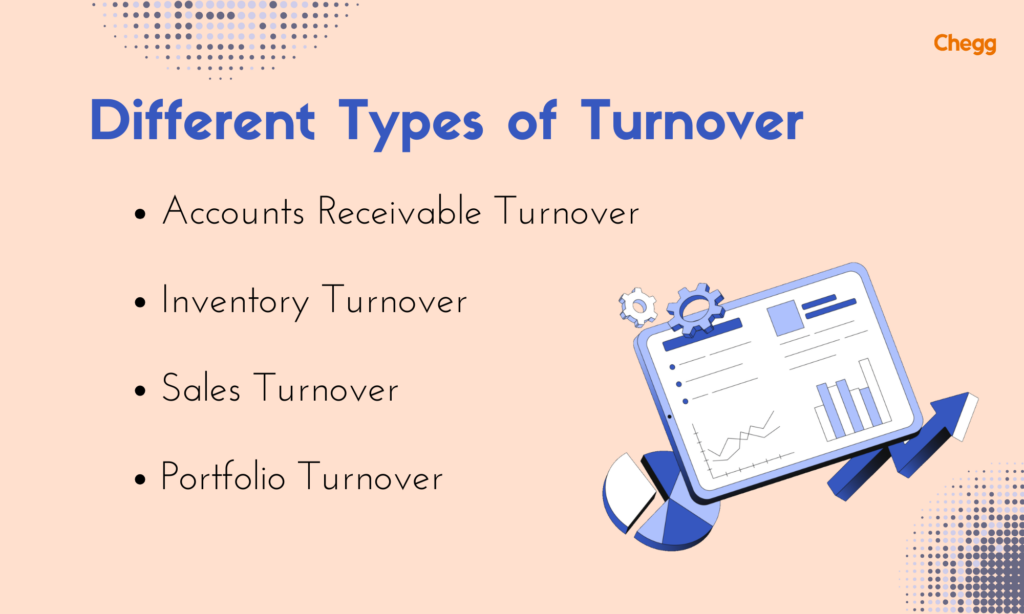

Quick Summary
Imagine you own a small chai stall in Mumbai. In one month, you sell 500 cups of chai at ₹10 each. Your total sales are ₹5,000. This total sales amount is called the Turnover of a Company.
In simple words, Turnover meaning refers to the total money a business earns from selling goods or services before deducting expenses like rent, salaries, or taxes. For Indian businesses, understanding what is turnover of a company is and how to calculate turnover of a company is crucial for taxes, loans, and growth. It is also known as gross revenue.
In this guide, we’ll explain:
Let’s start!

The Turnover of a Company refers to the total revenue or sales generated by the business within a specific period, usually a financial year. It represents the income a business earns from its core operations before deducting expenses like taxes, salaries, or production costs. This section will clarify what is turnover of a company is and how it plays a key role in measuring performance.
In simple terms, turnover shows how much money a company makes by selling its products or services. It is a crucial metric used to evaluate the scale and success of a business.
Key Takeaway: Turnover is only about sales, not profit!
Understanding the Turnover of a Company is crucial because it provides valuable insights into how well a business is performing financially. It affects multiple aspects of a company’s operations and decision-making. Let’s explore each reason in more detail:
The Turnover of a Company refers to the total revenue generated from its sales activities over a specific period, usually a year. A higher turnover often signals that the company has a strong customer base and is generating significant income. It shows the company’s ability to sell its products or services efficiently, which is an important sign of financial stability.
Investors carefully analyze a company’s turnover to determine whether it is growing and generating enough revenue to be a profitable investment. A consistent increase in turnover suggests that the company is expanding and capturing a larger market share, making it an attractive option for investors.
Monitoring the turnover helps companies set realistic sales targets and identify areas that need improvement. For instance, if turnover is not growing as expected, businesses can adjust their marketing strategies, improve product offerings, or streamline operations to boost sales.
When companies apply for loans, banks and financial institutions often review their turnover to assess repayment capability. A strong turnover indicates that the business has a steady income stream, making it less risky for lenders to approve the loan.
Now that you understand turnover meaning, let’s break down how to calculate turnover of a company step by step. This helps you monitor both your revenue performance and employee movement effectively.
Understanding how to calculate the Turnover of a Company is essential for evaluating its financial performance and employee management. There are two primary types of turnover: sales turnover and employee turnover. Here’s a detailed guide to help you grasp both concepts.

Employee turnover measures the rate at which employees leave a company within a given time frame. Maintaining a low employee turnover rate is essential for business stability and growth. Here’s a simple guide to calculate it:
Count the number of employees working at the beginning of the measurement period, such as a year.
Record the number of employees who left the company during that same period, either voluntarily or involuntarily.
Employee Turnover Rate (%) = ( Total Employees / Departing Employees ) × 100
Example Calculation:
A company starts the year with 200 employees. By the end of the year, 20 employees had left.
Employee Turnover Rate = ( 200 / 20 ) × 100 = 10%
This means the company’s employee turnover rate is 10% for the year.
By understanding and calculating the Turnover meaning of a Company, business owners can monitor financial performance and workforce stability, enabling them to make informed decisions for sustained growth.
Pro Tip: Use this free Excel template to calculate turnover: [Download Here].
If you want to understand what is turnover of a company is, it is important to look at different types of turnover in business:

The accounts receivable turnover is also known as the debtor’s turnover. The accounts turnover ratio calculates how the company collects its revenue and uses its assets. This turnover calculates the times the company collects its accounts receivable in a given period. This assesses how efficiently the company uses its credit given to the consumers and its recovery.
A company is considered profitable with a higher accounts receivable turnover ratio. This ratio compares two companies in the same industry. A company with a better accounts receivable turnover ratio is considered profitable. This gives a clearer picture to the investors before investing.
The inventory turnover is also known as the inventory turnover ratio. This ratio indicates the number of times a business sells and replaces its goods in a given time frame. The ratio considers the cost of all the goods sold compared to the average inventory for the given timeline.
The inventory turnover can help the company make informed decisions on different business operations, like.
Inventory turnover ratio = (COGS/Average value of inventory)
COGS – The cost of goods sold is the cost of the entire sales.
A company is said to have good financial health if its inventory turnover is higher. This indicates the goods of company are sold faster. If the inventory turnover is lower, it indicates the goods are sold slowly. It also indicates there is a surplus of inventory. So, the company has to manufacture according to its sales. This would help in maintaining a healthy inventory turnover ratio.
The sales turnover shows how much revenue a company generates from regular operations. This turnover is calculated after deducting the income of its non-operating revenue. Companies measure their sales turnover in regular intervals like monthly, quarterly, or annually.
The sales turnover can be calculated using the following variables.
The sales turnover is different from the inventory turnover. The sales turnover focuses on the sales during a particular sales period. The inventory turnover focuses on the quantity of inventory sold during that period.
Portfolio turnover ratio = (Minimum of securities bought or sold/Average net assets) x 100
Investors should consider portfolio turnover before investing in any financial scheme. If the potential turnover is high, it provides higher capital gain taxes. The amount is distributed to the investors, who must pay taxes on these revenue gains. The turnover should be above 30%.
These provide a clear picture of the turnover of a company and its importance in understanding the financial strength of the company.

Many people confuse turnover with revenue and profit. Let’s understand the difference clearly:
| Aspect | Turnover | Revenue | Profit |
|---|---|---|---|
| Definition | Total sales made by a business within a period | Total income generated from business activities | Financial gain after subtracting expenses |
| Includes | Core business activities | Core and non-core income | Costs, taxes, and expenses |
| Measurement | Sales volume or sales value | Income from sales, services, or other sources | Net income after expenses, taxes, and costs |
| Importance | Indicates business activity level | Shows the company’s financial health and efficiency | Shows company’s financial health and efficiency |
| Calculation | Quantity of goods sold x Selling price | Sum of all business income | Revenue – Expenses |
| Used in | Analyzing market share and sales efficiency | Assessing business size and growth | Evaluating profitability and sustainability |
| Example | Sales of products | Sales plus interest income | Net earnings |
Understanding the turnover of a company is crucial for several reasons, as it provides valuable insights into the business’s performance and health. Here are some key points that highlight its importance:
The turnover of a company matters because it serves as a key performance indicator, influences market perceptions, and aids in strategic planning and decision-making. Keeping a close eye on turnover can help businesses stay competitive and financially healthy.
What affects the turnover of a company is important for everyone. Here are some simple reasons why a company’s turnover might go up or down:
You can see how different elements can affect the turnover of a company. It’s like learning the secret ingredients to make your lemonade stand successful!
To better understand the Turnover of a Company, let’s go through a real-life example of how it is calculated.
Imagine a manufacturing company that sells 1,000 units of a product, and each unit is priced at ₹5000. Here’s how to calculate turnover:
So, the company’s Turnover of the Company for the financial year is ₹47,00,000.
Recommended Read:- Net Profit: Understanding Its Significance for Your Business
Understanding the Turnover of a Company is crucial for business success. It helps in evaluating performance, making informed decisions, and setting growth strategies. By knowing how to calculate and improve turnover, businesses can achieve financial stability and growth.
By understanding annual turnover, businesses can evaluate growth potential, manage cash flow, and make informed decisions about investments and resource allocation. Regularly analyzing annual turnover trends can also uncover seasonal patterns and guide marketing strategies. Ultimately, maintaining healthy annual turnover is vital for sustaining profitability and achieving long-term success in a competitive market, enabling companies to navigate challenges and seize growth opportunities.
Innovative, low-investment ideas for the hidden entrepreneur in you! Explore our guide on Business Ideas.

Answer: Turnover = Total sales of goods/services + Other income (commissions, royalties).
Example: A Delhi-based bakery sells ₹30 lakhs in cakes and earns ₹5 lakhs from catering: Turnover = ₹35 lakhs. Exclude taxes like GST.
Answer: Turnover is the total revenue a company earns from core operations (sales/services) before deducting expenses. For Indian businesses, it includes GST but excludes discounts/returns.
Answer: No. Turnover = Total sales. Profit = Turnover – Expenses (salaries, rent, taxes).
Example: ₹50 lakhs turnover – ₹35 lakhs expenses = ₹15 lakhs profit.
Answer: Depends on industry and size. For Indian MSMEs, ₹5 crores+ is strong. Startups aim for 20-30% YoY growth. GST registration is mandatory above ₹40 lakhs (goods) or ₹20 lakhs (services).
Answer: In India, view turnover via:
1. MCA21 Portal (company’s financial statements).
2. GST Portal (GSTR-9 annual return).
3. Third-party tools like Zauba Corp or Tofler for private companies.
Answer: Turnover is total sales in a period.
Example: A Mumbai clothing store sells ₹25 lakhs in apparel and earns ₹3 lakhs from alterations. Total turnover = ₹28 lakhs.

Authored by, Samiksha Samra
Digital Content Writer
Samiksha is a writer with a passion for sharing ideas and a knack for detail. She loves turning concepts into meaningful, engaging content. With a strong background in research and content strategy, she crafts clear, easy-to-understand narratives that resonate with readers. Her curiosity drives her to explore new subjects, ensuring every piece she creates is both insightful and impactful.
Editor's Recommendations
Chegg India does not ask for money to offer any opportunity with the company. We request you to be vigilant before sharing your personal and financial information with any third party. Beware of fraudulent activities claiming affiliation with our company and promising monetary rewards or benefits. Chegg India shall not be responsible for any losses resulting from such activities.
Chegg India does not ask for money to offer any opportunity with the company. We request you to be vigilant before sharing your personal and financial information with any third party. Beware of fraudulent activities claiming affiliation with our company and promising monetary rewards or benefits. Chegg India shall not be responsible for any losses resulting from such activities.